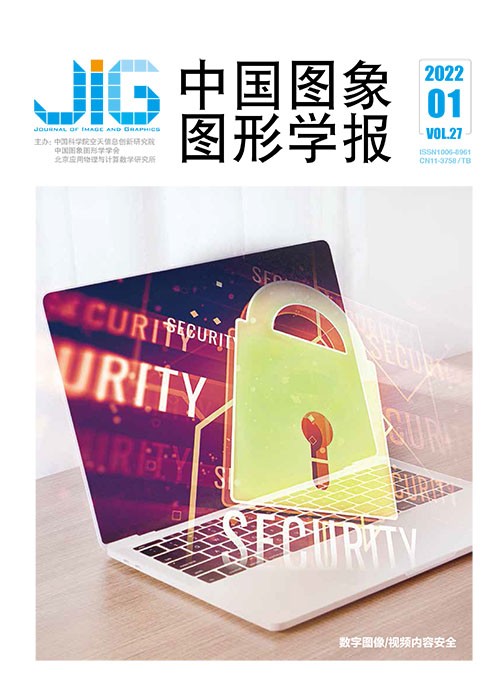
人脸活体检测综述
摘 要
人脸识别系统往往面临着各类人脸欺诈攻击,如打印相片、屏幕播放和3维面具等。如何区分真实人脸与虚假人脸,亦称人脸活体检测,对于人脸识别系统的安全具有十分重要的意义。近年来,已有大量人脸活体检测方法相继提出,部分已经成功获得实际应用。本文对人脸活体检测技术进行了全面的梳理回顾,包括硬件方案、算法、数据集、技术标准以及业界实际应用情况。最后,进行了总结与展望。整体而言,基于多模态数据,采取先验知识启发的深度学习方法目前能获得占优的人脸活体验证精度。随着人脸欺诈攻击方式的不断升级变更,面向未知类型攻击的人脸活体检测研究愈加重要,此外,新型的传感硬件方案也值得鼓励探讨。
关键词
Review on face liveness detection
Xie Xiaohua1,2, Bian Jintang1,2, Lai Jianhuang1,2(1. School of Computer Science and Engineering, Sun Yat-sen University, Guangzhou 510006, China;2. Abstract
Face recognition technology has been widely used nowadays, such as smart phone unlocking, users' account verification, access control system, financial payment, public security pursuit, and so forth. Face recognition system has been challenging with various face fraud attacks, such as printing photos, screen playing, 3D masks, etc. Bending the printed face to make it have a general three-dimensional structure of the face in practice. Meanwhile, the movement of the key components of the real face can be integrated into the fake face via fake coverage of the printed face with the hollowed-out eyes and mouth. Face spoofing technologies has aimed to present realistic apparent texture, accurate three-dimensional face structure, reasonable face motion, and discriminative target identity features generally. The issue of false face distinguishing, also known as face liveness detection, is of great significance to the security of face recognition systems. This research reviewed current face liveness detection technologies based on hardware, algorithm, data set, technical standards, and practical application. For hardware, some popular tools used for face liveness detection, such as RGB cameras, binocular cameras, (near) infrared cameras, depth cameras, three-dimensional scanners, light field cameras and multispectral imagers. Flash lamps are used for assistance as well. For algorithms, the original methods distinguish a real face and a fake face via analyzing the texture information, motion information, image quality, structure information, and three-dimensional shape in the video or image. The analysis is assisted based on user interaction or changing the environment with flashing. Deep learning technology has been using in face liveness detection as well. It is necessary to opt the appropriate face detection method in accordance with the targeted application scenario. In reality, face liveness detection technologies are mainly used in unsupervised authentication scenarios, such as smartphone unlocking, mobile app login, the self-service terminal of the bank, and attendance machine. The illustrated methods are mainly evolved as following:1) interactive verification based on a single camera, that is, the target is required to perform cooperative actions, such as shaking the head, blinking, opening mouth, and reading Arabic numerals; 2) the face liveness detection based on "visible light + near-infrared" dual-mode camera, in which near-infrared image is conducive to distinguish skin from other materials; 3) the face liveness detection based on "visible light + depth" dual-mode camera, in which the depth camera used to obtain the three-dimensional information of the object. The two methods latter can extract rich features for face liveness detection based on hardware combinations. Overall, based on multimodal data, the deep learning method has been adopted to obtain the optimal accuracy of liveness verification based on prior knowledge.In early 2018, China Information Security Standardization Technical Committee established the standards of liveness detection technology in the face recognition systems. In 2020, IEEE released the first international standard for face liveness detection (IEEE Std 2790-2020). With the emergence of new fraud methods, the research of face liveness detection will also encounter new challenges. First, face spoofing and face liveness detection will promote and upgrade each other. Therefore, it is particularly important to study the detection of unknown types of face fraud attacks. For unknown types of attacks, a feasible solution is to detect invisible attacks as abnormal samples. Next, the of face fraud upgrading means is related to the update of fraud media. In particular, the progress of high-precision 3D printing, flexible screen, and physiological mask will make face fraud more difficult to detect. Face liveness detection also needs to be developed at the hardware level consistently. It is necessary to explore the application of advanced sensing equipment such as multi-spectrometer, light field camera, and even ultrasound in face liveness detection. Moreover, the deep learning method plays a leading role in obtaining high accuracy. The lack of interpretability is also a major criticism of deep learning. For the application of face liveness detection, the interpretation of the deep learning methods needs to be conducted further. The interpretability mechanism has its priority to the design of the learning model, and to the integration of prior knowledge into the learning model. At last, it is necessary to develop a unified framework for joint face recognition and face liveness detection, which can improve the accuracy of both simultaneously.
Keywords
|



 中国图象图形学报 │ 京ICP备05080539号-4 │ 本系统由
中国图象图形学报 │ 京ICP备05080539号-4 │ 本系统由